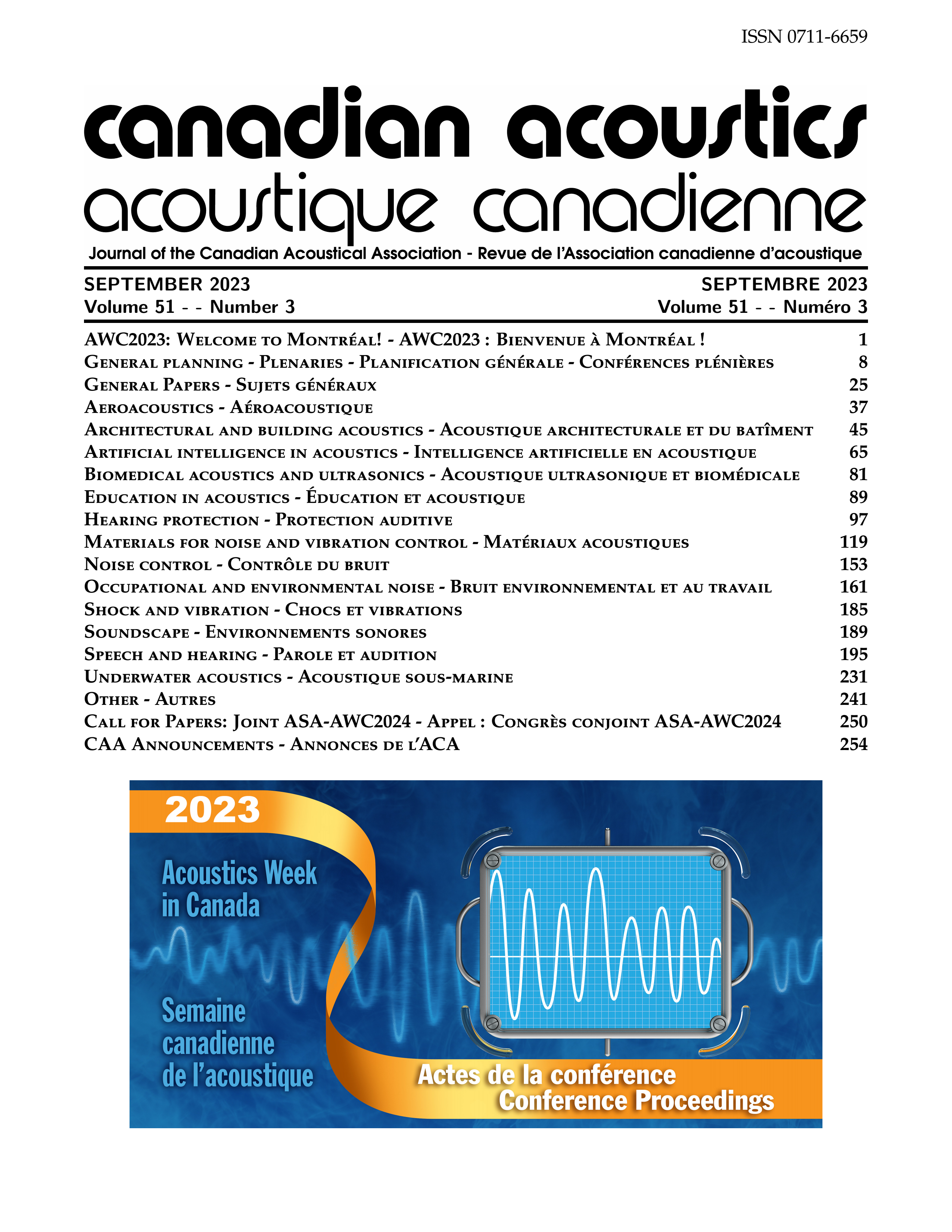Bragg Bands Generation in Beams and Plates for Mass Reduction and Vibroacoustic Performance
Abstract
Most of the existing approaches for designing locally resonant metamaterials involve addition or inclusion of elements such as tuned mass dampers or masses following a periodic pattern. The primary focus of this study is on the generation of Bragg bands in aluminum cantilever beams and plates following a subtraction-based approach. Periodic cells are created by using a simple machining operation, that is periodically removing material in the thickness direction. The goal is to design structures that are lighter than their homogeneous versions, but that can nevertheless exhibit similar or improved vibroacoustic behavior. Numerical simulations are first considered. Regarding beams, the effects of the number of periodic cells along length and the thickness removal are studied for a fixed beam length. For plates, the global vibration behavior as well as the sound transmission loss are evaluated for two plates with periodic diagonal material removal. Contact less vibration measurements using a multi-point laser vibrometer and an automatic impact hammer are then performed for beams and plates. Sound transmission loss measurements are also conducted for an homogenous aluminum plate, and two machined plates with two different diagonal periodicities for material removal. The obtained results generally indicate that simple machining operations can be a simple but efficient way for the generation of band gaps in beam-like and plate-like lightened structures.Additional Files
Published
How to Cite
Issue
Section
License
Author Licensing Addendum
This Licensing Addendum ("Addendum") is entered into between the undersigned Author(s) and Canadian Acoustics journal published by the Canadian Acoustical Association (hereinafter referred to as the "Publisher"). The Author(s) and the Publisher agree as follows:
-
Retained Rights: The Author(s) retain(s) the following rights:
- The right to reproduce, distribute, and publicly display the Work on the Author's personal website or the website of the Author's institution.
- The right to use the Work in the Author's teaching activities and presentations.
- The right to include the Work in a compilation for the Author's personal use, not for sale.
-
Grant of License: The Author(s) grant(s) to the Publisher a worldwide exclusive license to publish, reproduce, distribute, and display the Work in Canadian Acoustics and any other formats and media deemed appropriate by the Publisher.
-
Attribution: The Publisher agrees to include proper attribution to the Author(s) in all publications and reproductions of the Work.
-
No Conflict: This Addendum is intended to be in harmony with, and not in conflict with, the terms and conditions of the original agreement entered into between the Author(s) and the Publisher.
-
Copyright Clause: Copyright on articles is held by the Author(s). The corresponding Author has the right to grant on behalf of all Authors and does grant on behalf of all Authors, a worldwide exclusive license to the Publisher and its licensees in perpetuity, in all forms, formats, and media (whether known now or created in the future), including but not limited to the rights to publish, reproduce, distribute, display, store, translate, create adaptations, reprints, include within collections, and create summaries, extracts, and/or abstracts of the Contribution.


